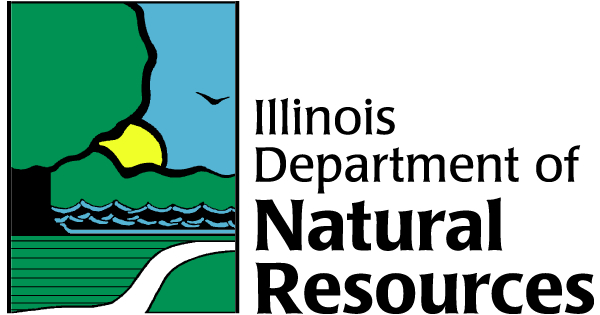Woodland Requirements and Plant List
Requirements
Size: The size is variable. You may be fortunate to have woodlands on your school property. If not, trees can be planted in an arrangement to create shade for the school building away from the building as well as providing wildlife habitat.
Light: Young saplings should be grown in full sunlight to prevent bending. Shrubs, forbs (showy flowering plants) and grasses for shade or partial shade may be selected.
Water: Trees and shrubs should be watered thoroughly immediately after planting and throughout the first growing season to encourage deep rooting. Watering by slow drip action is preferred. Any time drought conditions exist (no matter what the age of the tree/shrub) supplemental water should be provided. Native forbs and grasses do not require additional watering once established.
Elevation/Topography: Level ground is best for this habitat.
Soil: Trees and shrubs grow best in moderately moist (mesic), loose soils with good drainage. Sand and clay soils are not recommended. Native forbs and grasses will grow in many different types of soil. Research the best soil conditions before purchase of forbs or grasses.
Plant Materials: Native trees and shrubs should be selected with full growth potential taken into consideration (utility wires, blocking views, safety issues, leaf/fruit drop). Spring and fall blooming native forbs will add color to the woodland. Near the edge of the woodland, plants requiring partial shade may be selected. Birds are especially attracted to trees and shrubs that produce berries. See list.
Planting and Maintenance: Dig the hole only as deep as the root ball or roots extend. The trunk flare or root collar (where the roots meet the stem/trunk) should be at soil level and not below. Dig the hole twice as wide as the root ball. Carefully remove burlap or wire basket. Gently spread the lateral roots and refill the hole. Do not use peat moss or other soil amendments. Allow a slow stream of water to drip onto the soil. As the soil sinks around the roots, add more, but do not bury the trunk flare. Water thoroughly after planting. Stake, if necessary. Follow the guidelines for shady forbs given on the Web page, "How to Plant and Maintain Native Plants." Woodlands may be burned to eliminate noxious weeds and undergrowth and to rejuvenate forbs.
Plant List for Partial to Full Shade
blue phlox (Phlox divaricata)
bluebells (Mertensia virginica)
calico aster (Symphyotrichum lateriflorum)
columbine (Aquilegia canadensis)
Jack-in-the-pulpit (Arisaema triphyllum)
Jacob’s-ladder (Polemonium reptans)
inland oats (Chasmanthium latifolium)
muskingum sedge (Carex muskingumensis)
Solomon’s-seal (Polygonatum commutatum)
Special Considerations
Future Site Usage: Be sure the site chosen will never be used for future structures, building additions, parking, etc.
Wind: Wind conditions should be considered when selecting young trees. Otherwise, a wind break or staking may be required. To avoid this issue, purchase only trees with a circumference (at breast height) that can withstand the force of the expected wind.
Tree Wrap: The bark on young trees is often tender and can be damaged by freezing and thawing (especially on the side of the tree facing south and southwest). To avoid splitting of the bark, tree wrap may be applied around the trunk in November and removed promptly in March.
Mulch: Bark chips are very useful to retain moisture and keep down weed growth. However, avoid the "volcano" look. Do not let the chips come in contact with the trunk of the tree.
Emerald Ash Borer: Do not plant ash trees.
Garlic Mustard: Keep a watchful eye out for this invasive weed. Get rid of it immediately.
Patience: Trees are very slow growing. Some native forbs are also slow to flower (trillium takes eight years from seed).


